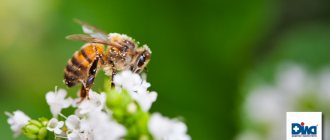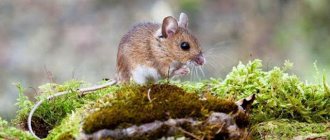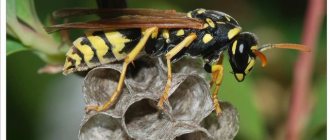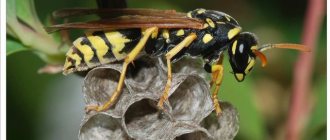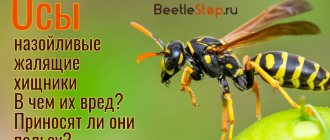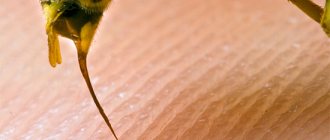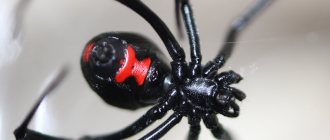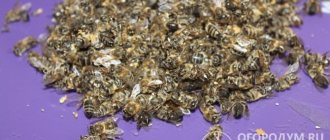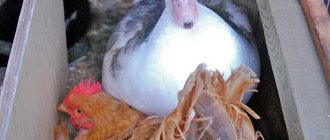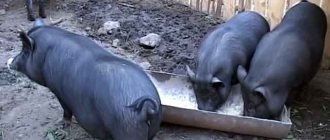Gardeners and gardeners, brushing aside annoying striped flying insects that land on watermelons or sparkling water, ask themselves the question: why are wasps needed? What is their significance in human life? What ecological role do they play in nature?
The role and purpose of the bee in nature does not raise questions. The value of honey-bearing insects is multifaceted. Not every person knows why wasps are useful.
Small insect exterminators
Adults feed on nectar and fruit extract. But the larvae need constant replenishment of protein. To do this, wasps prey on other insects, including flies, mosquitoes, spiders, aphids, and garden pests.
A flexible body structure, powerful jaws, a sting equipped with poison - nature generously endowed the “minke whales” with all this for a reason. Thanks to this arsenal, they can sting the enemy from almost any angle. They deal with small, weak opponents with the help of mandibles, crushing the skull or chitinous cover into small pieces.
Wasps use a sting on stronger insects, which, unlike bees, they freely remove after an attack. Depending on the species, the composition of the poison differs and can either simply paralyze the victim or provoke its death.
Scientists, answering the question of what wasps are for, say that without them, a person would simply be horrified by the number of insects that exist in nature. First of all, this applies to flies, midges, beetles and spiders.
Helpers in personal plots
Wasps play a significant role in nature by destroying garden pests. For example, the burrowing single Larra wasp helps in destroying a dangerous pest - the mole cricket. She is absolutely indifferent to other insects and animals.
Larra hunts in a very unique and masterly manner. The insect drives the pest out of the ground and injects its poison into it through its sting. The wasp lays its egg in the paralyzed victim. The mole cricket acts as an incubator for the development of offspring. While the larva develops, the donor remains alive, supplying the young individual with all the necessary nutritional components. After the last molt, the mole cricket dies. Much attention is paid to the reproduction and attraction of Larry wasps to garden plots in the USA. For this purpose, special research is carried out to identify which plants can attract beneficial wasps.
But slender insects help fight not only mole crickets. Giant scolia, in addition to pollinating flowers, regulate the number of bronze beetles, beetles, and rhinoceros beetles. Like the Larra wasp, Scolia lays eggs on its prey.
Tiny Spilomena troglodytes wasps destroy thrips. Other species with amazing diligence catch caterpillars of moths, leaf rollers, leaf beetles, bugs, cicadas, weevils, and horse flies.
We must not forget that the functions of wasps in nature include pollination of plants and flowers, which is important for their development and reproduction.
Description and lifestyle
Wasps, together with their closest relatives bees and bumblebees, belong to the order Hymenoptera. Numerous insect species share a common body structure. Their chest and abdomen are connected by a thin, stalk-like waist. Adults have two pairs of membranous wings. Large eyes have a complex structure that allows them to see in several directions. Among stinging insects there are solitary and social wasps. Only some species have the usual yellow-black coloration. For example, the chitinous shell of the lustrous wasp shimmers with a blue, purple and green metallic sheen. German females are densely covered with red hairs and have patterns on their abdomen. The size of the wasp imago ranges from 5 to 100 mm. Insects differ not only in size and color, but also in behavioral characteristics.
Wasps in medicine
The venom of Brazilian wasps is unique in its composition. As a result of many years of research, it was revealed that the venom of these wasps is capable of destroying cancer cells without affecting healthy tissue. The reason for this phenomenal effect lies in the special structure of the protein, which, interacting with the fats of cancer cells, converts them into a liquid substance.
It is already reliably known that the venom of the Brazilian wasp has shown its effectiveness against prostate, bladder and blood cancer.
Now scientists are hard at work in laboratories to create a synthetic analogue of the unique protein. It is possible that in a few years humanity will receive a universal cure for cancer.
Harm to humans
Despite all the beneficial properties, parasites also cause harm: more often to humans, but also to animals, birds, and reptiles. To control their population, natural enemies of ticks are provided. However, this does not eliminate the risk of parasite attacks on people. They note the risk of developing dangerous diseases and a number of serious complications after a bite.
Carriers of dangerous diseases
Representatives of many types of parasites are carriers of pathogens of serious diseases. Most often these are Ixodidae, Argasaceae, and Gamasaceae. Diseases that can develop after a pest bite:
- tick-borne encephalitis;
- borreliosis;
- fevers of various forms and types (Fu, hemorrhagic and others);
- tularemia;
- babesiosis;
- ehrlichiosis (various types).
Infection from encephalitis tick
Eat grain crops
The benefits of ticks are undeniable. However, harm is also taken into account, for example, the high risk of complete destruction of the grain crop. Moreover, even natural enemies of ticks do not solve the problem if the parasites have multiplied significantly and control of the colony population is required. The most dangerous species are barn pests. These are small parasites that attack grain products provided that their moisture level is above 13%. The danger lies in the fact that the parasites can enter a special phase (hypopus), at this stage of development they are resistant to low temperatures and pesticides.
Tick in hypopus phase
Allergies and harm to the body - scabies, dust mites
When bitten by ixodid ticks, a local reaction develops - large erythema. At this point, most often the allergy ceases to manifest itself. Dust mites pose the greatest danger to humans - they contribute to the development of bronchial asthma and a severe allergic reaction. The cause is often difficult to detect, since the source is dust, where microscopic parasites live.
In addition, itching is also dangerous. This is a scabies mite that lives under human skin. It multiplies rapidly, which is why the intensity of negative manifestations increases many times over: itching, dermatitis, and many subcutaneous paths are formed - areas where parasites gnaw passages under the outer integument. As a result, the body reacts to such interference with an allergic reaction. In this case, there is a general deterioration in the condition of the external integument.
Allergic reaction to scabies
Ticks parasitize everywhere (plants, animals, humans)
There are various types of ticks that pose a danger to plants and representatives of various biological species. As a result, complications arise in humans and animals, the quality of the crop decreases, the plants stop bearing fruit, since the offspring of the parasites, when emerging from the eggs, immediately begin to feed on the sap of the plantings.
When bitten by an infected animal or bird, the tick can attack a person. This means that such parasites represent a natural reservoir for the development of pathogens. Pathogenic particles can be found in the saliva of pests, as well as on the outer integument.
Tick repellent
Wasps - protectors of weak insects
Without knowing it, wasps indirectly protect other insects. Hunting abilities, aggressive disposition, and deadly sting force other representatives of the fauna to refrain from contact with the striped predator. Weaker individuals took note of this attitude towards the wasps and “borrowed their colorful outfit.”
Perhaps no insect has as many imitators as wasps. Striped colors help protect flies, hoverflies, beetles, butterflies and many other harmless creatures from birds and predators.
The benefits and role of wasps in nature cannot be underestimated. Urban individuals regulate the number of flies, which carry millions of dangerous bacteria on their legs. In garden plots, they help get rid of garden pests without resorting to the use of chemicals. A wasp attacks a person only when it senses an emanating threat. If you don’t panic at the sight of it, don’t wave your arms vigorously, and don’t try to kill it, the bright insect will fly by and not cause any harm.
general information
All wasps differ in size and are divided into subspecies. Not only can they sting painfully, but they can also benefit people.
Types of wasps
Few people know that every year these winged predators save hundreds of tons of farm crops around the world, exterminating hordes of pests of all varieties. Wasps are part of the order Hymenoptera, which contains tens of thousands of species. They tend to lead a social lifestyle. There are the following subfamilies of wasps:
- Scolia. They are one of the largest representatives of Hymenoptera insects. On average they are 6 centimeters long. Their wingspan can reach 10 centimeters. The color of skolia is dark with yellow and red splashes.
- Sand. Wasps of this species do not hunt spiders; their prey is insect larvae and aphids. They usually hide in earthen holes.
- Typhia. Representatives of this species tend to parasitize other insects. They usually lay their eggs in the bodies of various beetles.
- Hornets. Representatives of this group are large individuals. Their wingspan is 8 centimeters, and their body size reaches almost 6 centimeters. Since they kill a huge number of pests, they are considered beneficial insects for farms.
- German women. A distinctive feature of this species is the thick hair, which is found only in females. For this they were nicknamed velvet ants.
- Floral. Individuals of this species are considered the smallest among all hymenopteran insects. Their length never exceeds 1 centimeter. They eat pollen from flowers.
- Road. Representatives of this group usually measure about 3-4 centimeters. They prefer a solitary existence and hunt mainly spiders. They are even able to defeat large tropical species. They lay eggs in their prey.
- Sparkles. Each such subfamily has its own species. They got their name for their beautiful golden color. They can parasitize not only other insects, but also their fellow insects.
Typical habitats for wasps are the middle and southern stripes of the globe. They are found both in coniferous forests and in the tropics. The suitable temperature for them is from 12 to 40 degrees Celsius.
Features of reproduction
The life of a wasp swarm lasts only for one summer. The construction of cells begins in the summer, and the female lays one egg in each of them. This camera is well sealed. All individuals can reproduce independently. As soon as the offspring matures, they fly away from the nest forever.
Those insects that live in families have a queen, which is responsible for the construction of the hive. Each individual goes through a development cycle lasting one month. A larva emerges from the egg, which turns into a pupa, and from it an adult develops. Over the course of several years, a wasp swarm can number about a thousand insects.
Main types of hornets
There are 23 species that have a similar way of life, diet, and reproduction characteristics. However, each of them has significant differences in appearance. The most common types of hornet in the photo:
- Common hornet. The most common species, found mainly in Europe. The variety is also present in North America. The dimensions of the working individual are 20-22 mm, the uterus is 30-35 mm.
- Asian giant. The largest species, with a record size for a wasp - up to 10 cm. The predator lives in Asia and is represented by several subspecies. A distinctive feature is a bright yellow head and black wide stripes on the body. This is one of the most dangerous hornets, since the venom is extremely toxic and can even cause human death.
- Black. This wasp is common in Asian countries and in some regions of Russia (Amur region, Transbaikalia). The insect is characterized by a parasitic lifestyle. The female is not as busy caring for her offspring as other species. It penetrates a colony of large wasps of another species, kills the queen, and takes her place.
All types of wasps have toxic venom for protection and successful hunting.
Useful tips
It is impossible to guarantee that your yard will be free from wasps, and given the benefits these insects provide, it is not practical. But you should think in advance about how to protect the ripening of sweet fruits from insects.
To do this, pears, peaches, and bunches of grapes are covered with a net or other material. The process is labor-intensive and time-consuming, but the harvest will remain intact and you won't have to use toxic insecticides to do it.
If there are too many wasps on the site, but you still decide to get rid of them, you should not immediately use chemicals. It is more advisable to try to get by with safer means, for example, using traps (they can be made by housewives).
It has been noticed that wasps do not take root where there are already other people’s nests. And since insects are not very picky, a vaguely similar structure can be used as a false nest.
What do they eat in summer
The diet and feeding habits of larvae and adults differ significantly. Thinking about what wasps eat, you might think that they are omnivores, but this is a mistaken opinion. There are quite a lot of things that wasps eat and will never touch. Moreover, they are quite picky when it comes to nutrition.
The most constant food for insects is fruit and berry juice, which ripens during the period of their activity. Such nutrition is the main source of energy. In addition, wasps love the insides of berries and are able to leave behind only the skin. This applies to plums, raspberries, strawberries, blackberries and grapes.
Representatives’ favorite products are also:
- Sugar;
- Honey products;
- Fruit varieties of jam;
- Sweet syrups.
In turn, the larvae feed exclusively on protein tissues, that is, on other insects. Suitable for feeding and development of future offspring:
- Slug;
- Butterfly;
- Spider;
- Caterpillar;
- Cockroach;
- Bedbugs and other insects.
Important! If there are hives with bee families nearby, there is a danger of the striped workers being destroyed by predators.
How do they reproduce?
Towards the end of the warm period, workers add large honeycombs to the nests. All this is necessary for the queen to lay eggs. Then, within 20 days, females and males are born, which are called drones. By the end of August, the young offspring need to be well fed in order to get stronger. All this time they are protected by the roof of the nest. With the arrival of autumn, drones begin to mate. At one time, the male fertilizes the uterus with so much biomaterial that she can lay eggs throughout her life.
The predecessors of drones are not able to survive frosts, so they die. After the wasps reproduce, the young female is able to fall asleep, lay eggs again when spring arrives, and reproduce. Moreover, during all the warm months, only worker wasps are born. Fertile offspring appear only with the arrival of August. The timing of the mating season may also explain why wasps attack people for no reason and are especially active and aggressive towards other insects.
